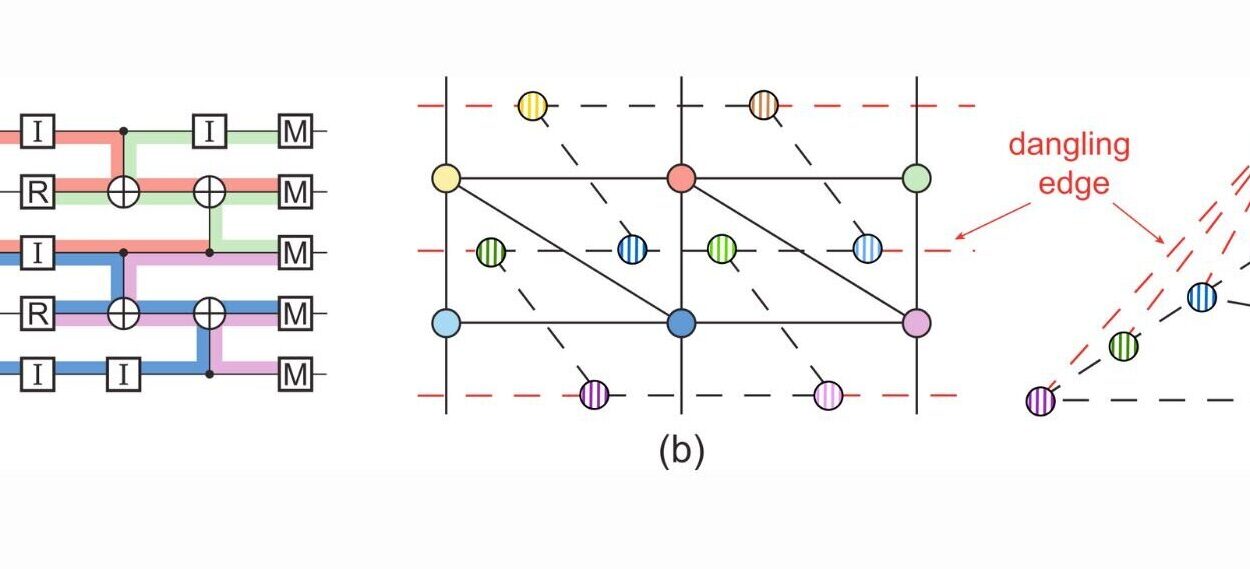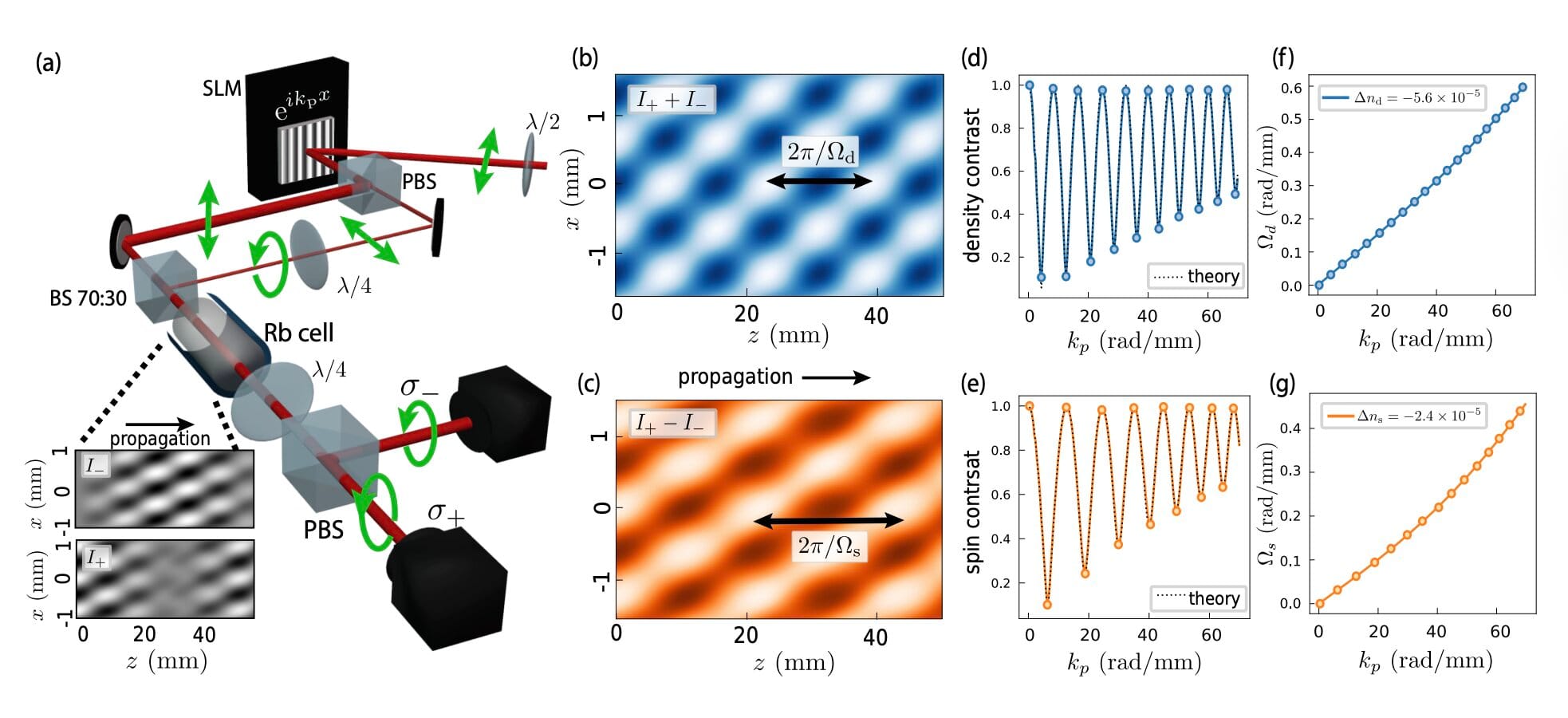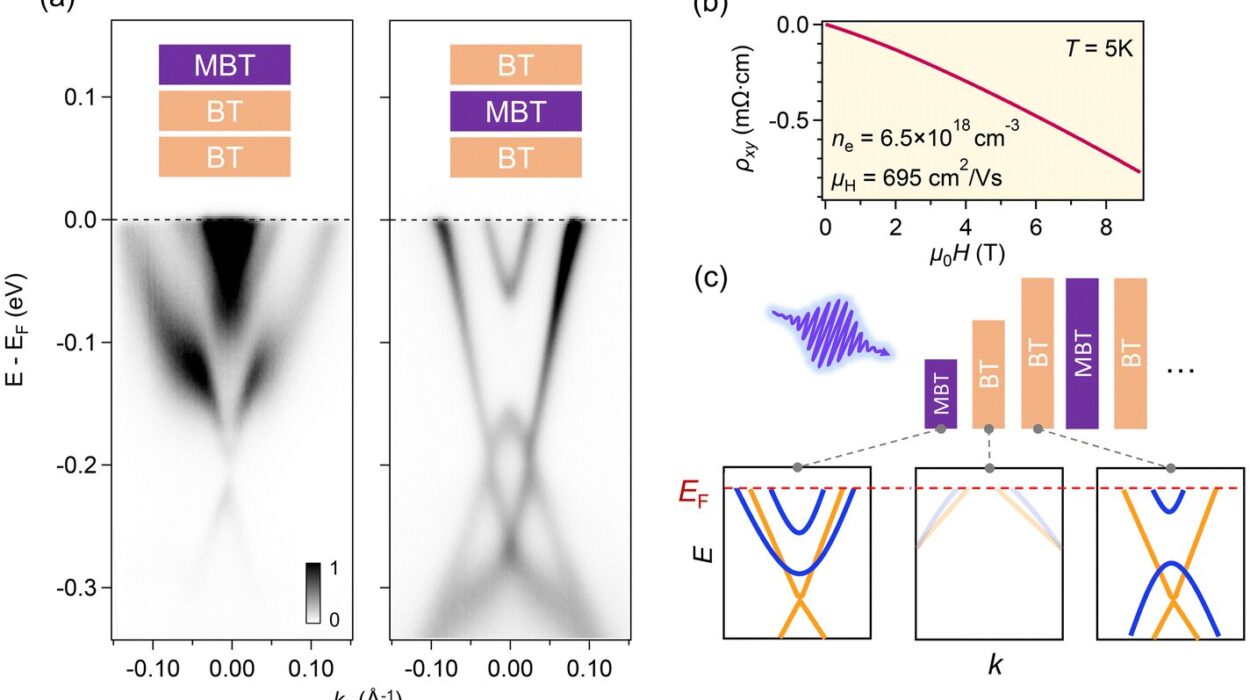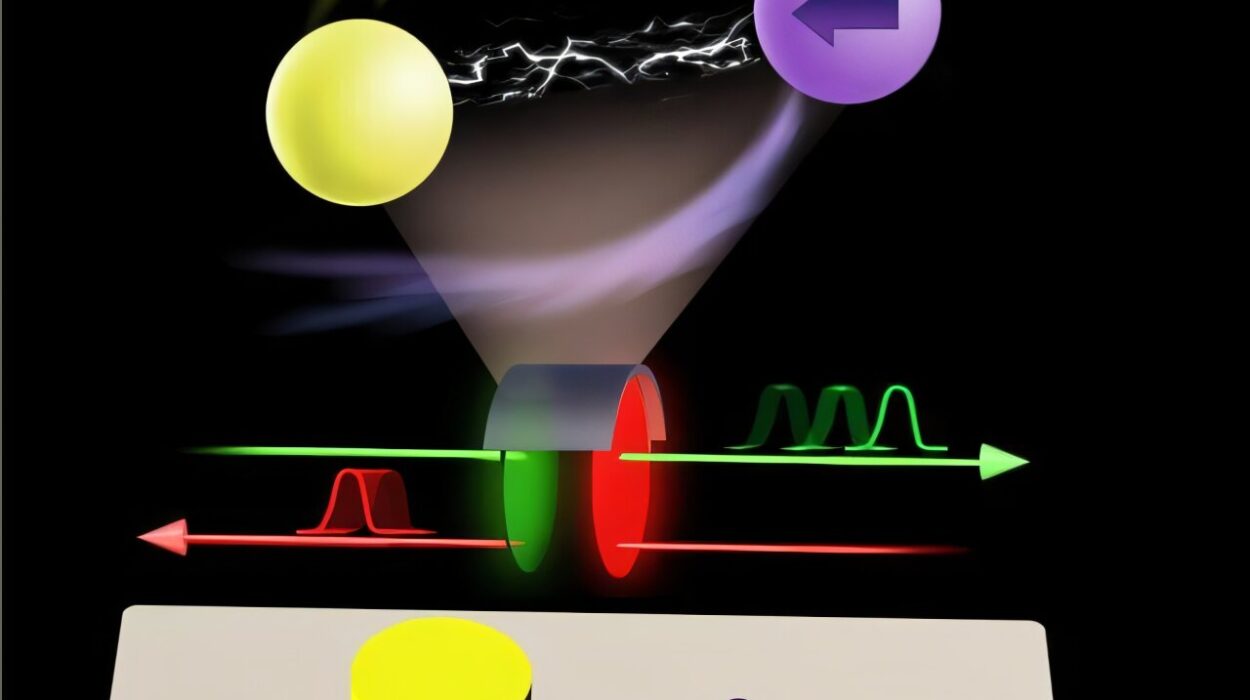A groundbreaking study by a team of researchers has uncovered a novel way to manipulate the magnetic behavior of quantum materials using applied voltages, specifically focusing on lanthanum strontium manganite (LSMO). This discovery could pave the way for more energy-efficient methods of controlling magnetism, with implications for the development of next-generation neuromorphic circuits and spintronic devices. The research, published in the journal Nano Letters, reveals how voltage can influence the magnetic properties of LSMO, a material that exhibits both metallic and magnetic behavior at low temperatures and becomes insulating and non-magnetic at higher temperatures.
The Mystery of Quantum Materials
Quantum materials, like LSMO, exhibit unique properties due to the principles of quantum mechanics. Unlike conventional materials, the behavior of these materials is not entirely governed by classical laws but by quantum effects, which can lead to unusual phenomena such as superconductivity, magnetism, and topological states. These materials have the potential to revolutionize many technological fields, from electronics to computing, due to their ability to perform tasks that are otherwise challenging for traditional materials.
LSMO, a compound made from lanthanum, strontium, and manganese, is known for its ability to switch between magnetic and non-magnetic states depending on the temperature. At low temperatures, it is metallic and magnetic, while at higher temperatures, it transitions to an insulating, non-magnetic state. This temperature-dependent behavior makes LSMO an intriguing candidate for studying how external stimuli, like voltage, could influence its magnetic properties.
Voltage-Induced Magnetic Behavior in LSMO
The new research demonstrates that applying voltage to LSMO in its magnetic state can cause the material to divide into regions with distinct magnetic properties. Unlike conventional materials, where magnetic properties are largely unaffected by voltage, LSMO responds to voltage by tuning the magnetic behavior of these regions. The ability to control the magnetism in this way is significant because it opens up new possibilities for controlling the material’s magnetic properties in a highly controlled manner, without the need for temperature changes or external magnetic fields.
This phenomenon is particularly remarkable because it challenges the traditional understanding that magnetism is usually not influenced by applied voltage. In the case of LSMO, the applied voltage acts as a tool to “tune” the magnetism across different regions of the material. These findings suggest that voltage could be used as an energy-efficient means to manipulate magnetism in quantum materials, which could be crucial for the development of advanced electronic devices, especially in areas like neuromorphic computing.
Neuromorphic Circuits: Mimicking the Brain
The ability to tune a material’s magnetism with applied voltage holds great potential for neuromorphic circuits, a class of circuits designed to mimic the way the human brain processes information. Neuromorphic computing aims to replicate the brain’s neural networks using artificial systems that operate more like biological neurons, with the goal of creating more efficient, faster, and smarter information processing devices.
LSMO, with its ability to switch between different magnetic states and resistance values, offers a promising new approach to neuromorphic circuits. The voltage-induced changes in both magnetism and resistance in LSMO could be exploited to create more sophisticated neuromorphic devices. These devices, which operate based on the manipulation of electronic states (such as resistance and magnetism), would not only be capable of performing complex computations more efficiently but could also reduce energy consumption, making them ideal candidates for next-generation artificial intelligence (AI) systems.
Spintronics: Harnessing Electron Spin
In addition to its potential in neuromorphic circuits, the discovery of voltage-controlled magnetic regions in LSMO also opens new avenues for spintronics. Spintronics is a field of electronics that exploits the intrinsic spin of electrons, rather than just their charge, to carry and store information. The ability to manipulate the spin of electrons could lead to faster and more efficient devices, with applications ranging from memory storage to quantum computing.
LSMO, as a material that can be used for both switching electrical resistance and spintronic applications, represents a significant step forward in spintronic research. The unique behavior of LSMO under applied voltage could be harnessed to develop spintronic neuromorphic devices, combining the strengths of both fields. These spintronic neuromorphic devices could offer enhanced performance for AI tasks, providing faster processing speeds and lower energy consumption compared to conventional electronic circuits.
The Role of Ferromagnetic Resonance
The researchers used a technique known as ferromagnetic resonance (FMR) to detect and measure the changes in the magnetic properties of LSMO under different voltage levels. FMR is a powerful tool that allows scientists to observe the precession of a material’s magnetization in response to an applied electromagnetic field. When the frequency of an incoming electromagnetic wave matches the frequency of the magnetization’s oscillations, a peak is observed in the resonance signal, providing insights into the material’s magnetic properties.
In the case of LSMO, the researchers observed multiple resonance peaks, each corresponding to a different magnetic phase within the material. Each phase displayed unique magnetic properties, with electron spins oscillating at different frequencies. These distinct magnetic phases indicated that the material was undergoing voltage-controlled changes in its magnetic behavior. Furthermore, even small variations in the applied voltage caused significant changes in the oscillation frequencies, highlighting the material’s sensitivity to voltage and its potential for fine-tuned control of magnetic properties.
Implications for Future Technologies
The discovery of voltage-controlled magnetic regions in LSMO has profound implications for the future of spintronic and neuromorphic technologies. The ability to control magnetism and resistance in a single material opens up new possibilities for creating devices that can process information more efficiently, reduce power consumption, and mimic the complex processing abilities of the human brain.
Spintronic neuromorphic devices, for example, could be used in a wide range of applications, from AI and machine learning to advanced robotics and autonomous systems. By leveraging the unique properties of quantum materials like LSMO, researchers can create devices that not only perform tasks more efficiently but also operate on a scale that was previously unimaginable. These devices could play a key role in the development of the next generation of computing systems, including quantum computers and highly advanced AI systems that are capable of processing vast amounts of data at incredible speeds.
Conclusion
The discovery of voltage-induced magnetic behavior in lanthanum strontium manganite (LSMO) marks a significant breakthrough in the field of quantum materials and their potential applications in spintronics and neuromorphic computing. By demonstrating that voltage can be used to manipulate the magnetic properties of LSMO, the research opens up new pathways for creating more efficient, energy-saving devices that combine the best of quantum materials and advanced electronic engineering. With further exploration, this breakthrough could lead to the development of more sophisticated spintronic neuromorphic devices, paving the way for faster, smarter, and more energy-efficient computing technologies that mimic the computational power of the human brain.
Reference: Tian-Yue Chen et al, Electrical Control of Magnetic Resonance in Phase Change Materials, Nano Letters (2024). DOI: 10.1021/acs.nanolett.4c02697






